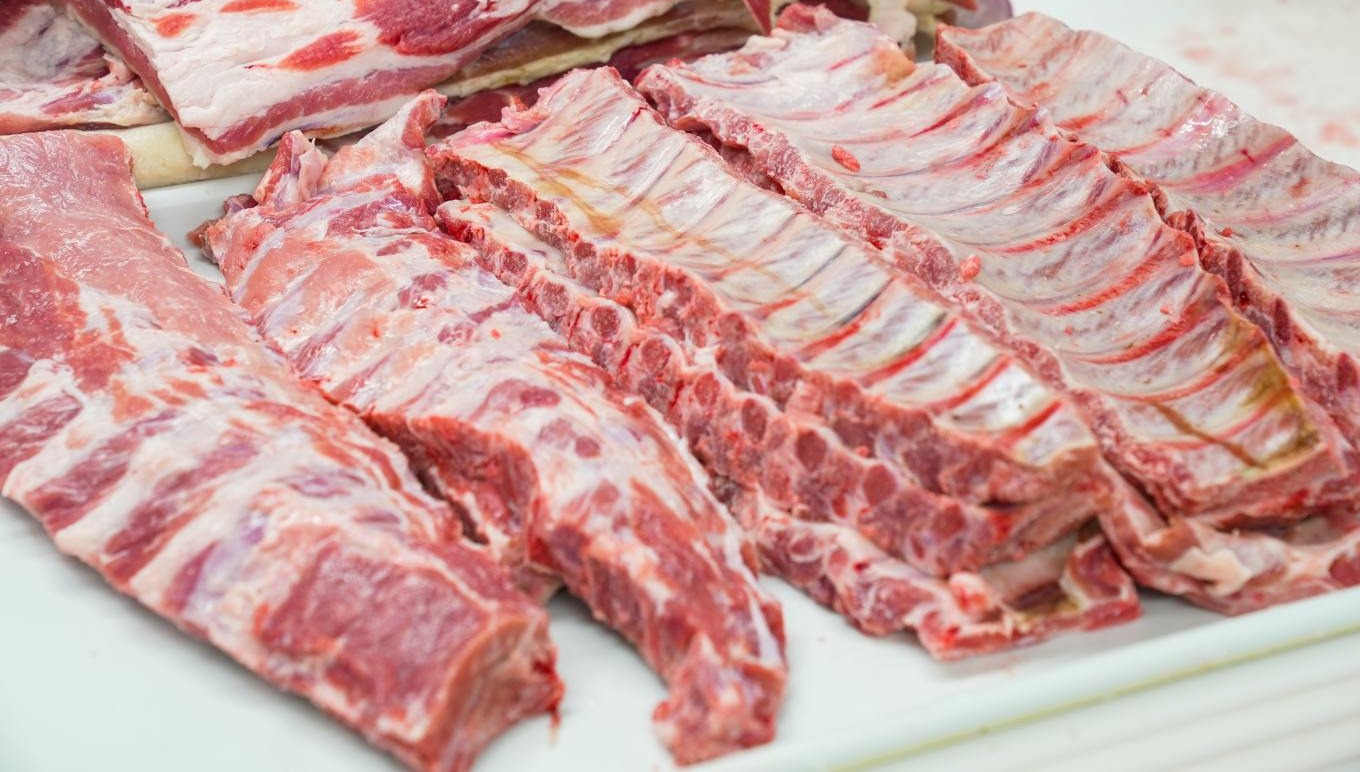Featured in this post
How ERP Solutions Help Tackle the Toughest Meat Industry Challenges
How ERP Solutions Help Tackle the Toughest Meat Industry Challenges

Operating in today’s meat industry takes an informed, prepared approach due to a host of inherent challenges tied to the nature of the products and the expectations of consumers and regulatory bodies. As a professional in the sector, you’re well aware of the extra complications that come with sourcing, processing, packaging and selling meat, but you may be at a loss for how to overcome some or all of them.
Luckily, purpose-built technology that streamlines and simplifies the critical processes of meat businesses like yours is here in the form of enterprise resource planning (ERP) solutions. With a specialized system from a vendor with an in-depth understanding of your special considerations, you can put your concerns on the chopping block.
Here, we’ve come up with a short list of the toughest challenges in the meat industry, as well as the ways that the right meat, poultry and seafood ERP can keep your organization moving forward with confidence.
Challenge 1: Food Safety and Compliance
Meat-related food safety emergencies have unfortunately resulted in 7 of the 10 most costly food recalls in U.S. history, which has prompted regulatory bodies and government food safety agencies to increase their demands on businesses in the sector in terms of compliance and sanitation. Consumers likewise have grown more discerning when purchasing meat, putting the onus on your brand to prove that the items you sell are fit for eating and free from any contaminants.
Solution
Industry-specific ERP platforms help keep your operations entirely compliant with all necessary standards and regulations through automatically scheduled routine checks. The best solutions on the market—like Aptean’s ERP for meat, poultry and seafood processors—are built with best practices in mind, helping to ensure that your facilities and products are completely safe for workers and consumers alike.
Challenge 2: Transparency and Traceability
Going hand-in-hand with maintaining compliance are the related matters of transparency and traceability. Younger consumers in particular are increasingly interested in plant-based alternatives, so in order to stay relevant, your company needs to demonstrate that the meat products you offer are wholesome, healthy and responsibly sourced.
Solution
By acting as your organization’s unified “source of truth,” a meat, poultry and seafood ERP system can keep track of all important product and ingredient details from one end of the supply chain to the other. You’ll be able to access this information at any time and know it’s both accurate and up-to-date, which will facilitate the kind of transparency that today’s shoppers demand.
Challenge 3: Animal Welfare and Sustainability
Another hot topic in the food industry at large is sustainability, and this is an especially challenging issue for meat businesses considering it overlaps with concerns over animal welfare. With industrial meat ranked as the single largest cause of deforestation globally and responsible for approximately 1.4 billion pounds of waste each year, your company must take a stand and show commitment to improvement on this front to attract today’s more conscious consumers.
Solution
With powerful analytics functions, ERP for the meat industry can help you identify operational inefficiencies within your facilities, allowing you to reduce waste and unnecessary energy expenditure to lower your carbon footprint. The supply chain management features of these platforms also allow you to remain flexible with your sourcing, so you’ll be able to introduce new partners that use more responsible farming techniques and thereby help alleviate customers’ concerns over the treatment of animals used in your products.
of the 10 most costly food recalls in U.S. history involved meat
Challenge 4: Short Ordering Cycles
Meat is most commonly sold fresh and has a relatively brief shelf life, with most product types having a window of two weeks or less. This means that ordering cycles are short, which necessitates keeping supply chains relatively simple and straightforward. Still, it remains difficult to predict market demand and align your production accordingly without the right tools at your disposal.
Solution
ERP solutions can automatically schedule production according to your orders so that you know you’ll have what you need for fulfillment without ending up with an excess. Just as importantly, the most advanced systems offer excellent demand forecasting functionality, allowing you to make informed decisions and dial in your supply to meet the needs of the market.
Challenge 5: Catch Weight
The matter of catch weight management—or variable weight management—is unique to the meat, poultry and seafood sectors, similar to cheese for dairy. Because every piece of meat varies in its cut and composition, two products sold under the same name can vary in their weight, which means that they must be priced differently to ensure that both your business, as well as your customers, are treated fairly.
Solution
Such a specific consideration requires a highly specialized approach, but thankfully the best food ERP have the tool for the job with a full set of catch weight capabilities. These will allow you to automatically weigh and calculate prices for your products and can even facilitate labeling to clearly communicate to customers what they’re getting.
Challenge 6: Numerous End Products
Even if your company focuses on a single kind of meat like beef or pork, you still likely have a variety of product formats in your suite of offerings. That’s definitely a complicating factor, as each different item will have its own manufacturing processes, quality parameters, safety concerns and packaging configurations, which can be cumbersome to manage with manual processes and susceptible to human error.
Solution
ERP platforms tailored to the meat industry are made with the understanding that organizations like yours sell a variety of different products, so the interface is designed to accommodate all of the necessary specifications. Best-in-class solutions like Aptean’s meat, poultry and seafood ERP can even automate the important quality and safety checks while also ensuring that the right materials and containers are used for packaging of your finished goods.
billion pounds of waste are generated by the meat industry each year
Challenge 7: Slicing Efficiency
Slicing the raw meat you receive may seem like a simple matter, but whether it’s done by hand or by machine, there’s more to this process than simply moving a knife or flipping a switch. If you’re serious about getting the most out of your materials and being as lean and efficient as possible, you’ll want to look into the metrics and gauge your true slicing performance.
Solution
As they can with all of your other critical processes, meat, poultry and seafood ERP solutions can help you dig deep into the numbers behind your slicing processes. You’ll be able to determine whether certain employees or machines are creating inefficiencies or quality issues and then implement a plan for improvement through training, equipment maintenance or upgrades.
Challenge 8: Organizational Visibility
Every organization in the larger food and beverage industry is being put to the test as the market continues to move at a breakneck pace. With changing consumer preferences, continuous food safety efforts and a need for complete bidirectional traceability along the supply chain, there are a lot of facts and figures to keep straight, and old-school record-keeping methods will not cut it.
Solution
ERP systems built for food and beverage businesses are increasingly seen as the foundation upon which a digital transformation can be accomplished. The single cross-functional database that keeps all of your most important information highly visible for key stakeholders—allowing them to act on data-driven insights—and automation of manual processes helps speed up your operations and eliminate any guesswork.
Finding Not Just a Provider, but a Partner
All of these benefits of meat, seafood and poultry ERP solutions probably sound enticing, but it would be a mistake to rush out and try to implement the first system you come across. Vetting the vendor behind the platform is necessary to make sure you’re getting both the features you need as well as the support necessary for the implementation process and beyond.
At Aptean, we leverage our decades of industry knowledge and experience from thousands of ERP implementations to guide our clients through their journey. Together with your teams, we create a realistic timeline including expectations and milestones in each phase, all while providing guidance based on industry best practices.
What’s more, our systems have the advantage of being built on Microsoft Dynamics 365, meaning we’re at the cutting edge of integrations and can offer a user-friendly interface. We’re also proud to offer flexible cloud deployments and encourage businesses to look into these setups for better security, reliability and flexibility.
Ready to hear more about how Aptean Food & Beverage ERP can help your company confront the biggest meat industry challenges? Contact us today, or request a specialized demo.
Ready to master the complexities of the meat and seafood industry?
Our seafood and meat processing ERP drives positive change and acts as a future-proof platform for growth.



 Jack Payne | Vice President, Product Management & Solutions Consulting
Jack Payne | Vice President, Product Management & Solutions Consulting